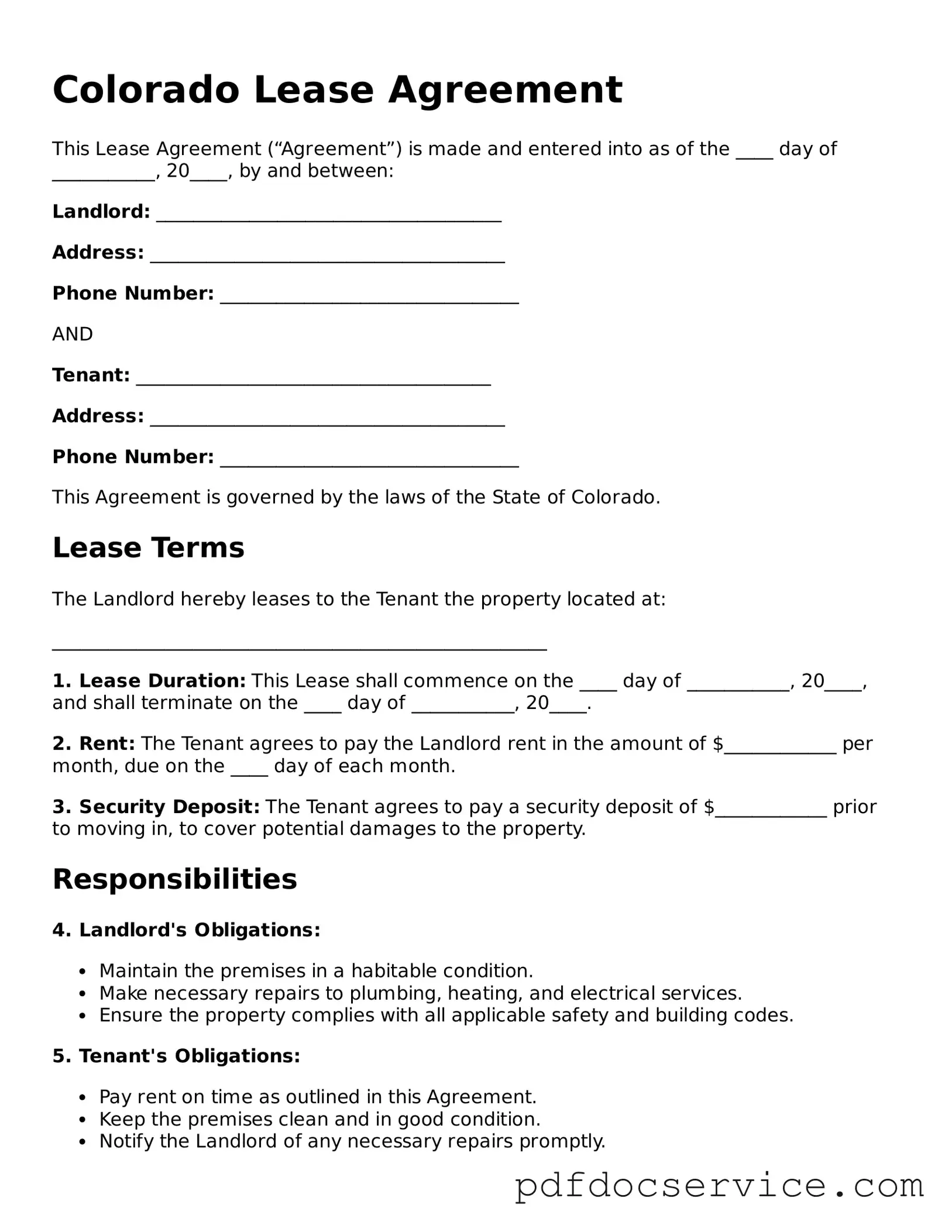A Colorado Lease Agreement form is a legal document that outlines the terms and conditions under which a landlord agrees to rent property to a tenant in Colorado. It includes important details such as the rental amount, duration of the lease, and responsibilities of both parties.
What are the essential elements included in the lease agreement?
Essential elements of a Colorado Lease Agreement typically include:
-
Names of the landlord and tenant
-
Property address
-
Lease term (start and end dates)
-
Monthly rent amount and payment details
-
Security deposit information
-
Maintenance responsibilities
-
Rules and regulations regarding the property
-
Conditions for termination of the lease
Is a written lease agreement required in Colorado?
While a verbal agreement can be legally binding, it is highly recommended to have a written lease agreement. A written document provides clarity and protection for both parties, making it easier to resolve disputes if they arise.
How long can a lease agreement last in Colorado?
In Colorado, lease agreements can vary in duration. They can be short-term (such as month-to-month) or long-term (such as one year or more). The specific duration should be clearly stated in the lease agreement.
What is a security deposit, and how is it handled?
A security deposit is a sum of money collected by the landlord to cover potential damages or unpaid rent. In Colorado, landlords can charge up to one month's rent for a residential lease. The law requires landlords to return the deposit within 60 days after the lease ends, minus any deductions for damages or unpaid rent, which must be documented.
Can a landlord enter the rental property without permission?
In Colorado, landlords must provide reasonable notice, typically 24 hours, before entering a rental property. Exceptions may apply in emergencies, such as fire or flooding, where immediate entry is necessary.
What happens if a tenant wants to break the lease early?
If a tenant wishes to break the lease early, they should review the lease agreement for specific terms regarding early termination. Many agreements include a clause that outlines penalties or conditions under which a tenant can terminate the lease without incurring significant costs.
Are there any specific tenant rights in Colorado?
Yes, tenants in Colorado have several rights, including the right to a habitable living environment, the right to privacy, and protection against retaliatory eviction. It is essential for tenants to be aware of these rights to ensure they are upheld during the rental period.
Colorado Lease Agreement forms can be obtained from various sources, including online legal document providers, real estate offices, or local government websites. It is important to ensure that the form complies with Colorado laws and is tailored to the specific rental situation.
